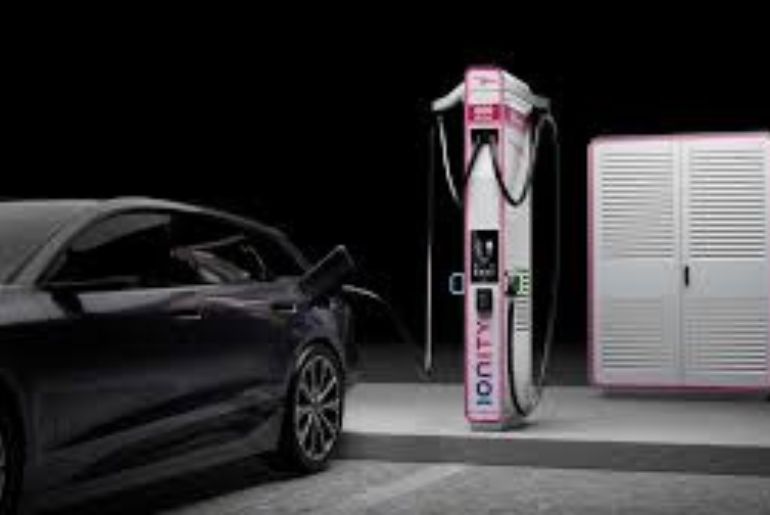With ultra-fast “megawatt” charging, Europe is catching up to China, thanks to Ionity and Alpitronic.
We were astounded by BYD’s five-minute megawatt-charging when we tested it in China. At least 262 miles (421 km) were added to the range meter during a charging stop that was as quick—or even quicker—than filling up with petrol. This is more than enough for another leg of a lengthy road trip.
Later this year, Ionity, the rapid charging operator supported by a number of automakers, including the BMW Group, Ford, Hyundai, Kia, Mercedes-Benz, and the Volkswagen Group, will bring a comparable experience to Europe.
- Ionity will install even faster DC fast chargers in Europe later this year.
- Currently, Ionity has 350 kW chargers.
- The new megawatt-capable stations will send up to 600 kW to compatible EVs.
With more than 5,000 charging stations that can provide up to 350 kW of power to each connected EV, the company takes pleasure in being the area’s top ultra-fast charging network. However, Ionity plans to introduce megawatt-capable stations for even shorter charging stops in the second half of the year.
Installing Alpitronic’s HYC 1000 system, which can supply up to 600 kW to a linked EV, will make the operator the first in Europe. However, there are some crucial details to consider, beginning with the fact that the new charging stations aren’t currently able to provide automobiles with 1 MW of power.
A Power Cabinet and up to four separate stalls, each with two liquid-cooled charging cables, make up the system. Stated differently, up to eight EVs can be charged concurrently at a single installation; however, the charging rates will be lower in this case.
The 1,000 kW of power that the Power Cabinet can supply is divided among the stalls. If a single EV is linked to a specific station, it can utilise its full capacity because a single stall is rated for a maximum of 600 kW (1,000 volts at 600 amps). However, none of the EVs that are currently on the European market are capable of handling this amount of power. More should eventually be able to do that.
According to Alpitronic, the chargers will dynamically distribute power among the charging stations when several EVs are utilising the same station. This is crucial since different EVs require different amounts of electricity to charge. Therefore, when an MG4 with a maximum output of less than 150 kW shares a station with a Porsche Taycan and a Hyundai Ioniq 5, all of which are capable of readily consuming more than 200 kW, they should all receive the full input.
However, according to Ionity, a powerful enough EV could get 186 miles (300 km) of range from this new charger in just eight minutes, putting it closer to a traditional petrol fill-up.
The largest DC fast charging network in Europe, Spark Alliance, was recently formed by Ionity in collaboration with three additional ultra-fast charging operators: Fastned, Atlante, and Electra. In Europe, EV drivers will be able to charge at more than 1,700 stations with a total of 11,000 stalls using a single smartphone starting this summer.

